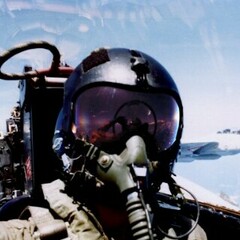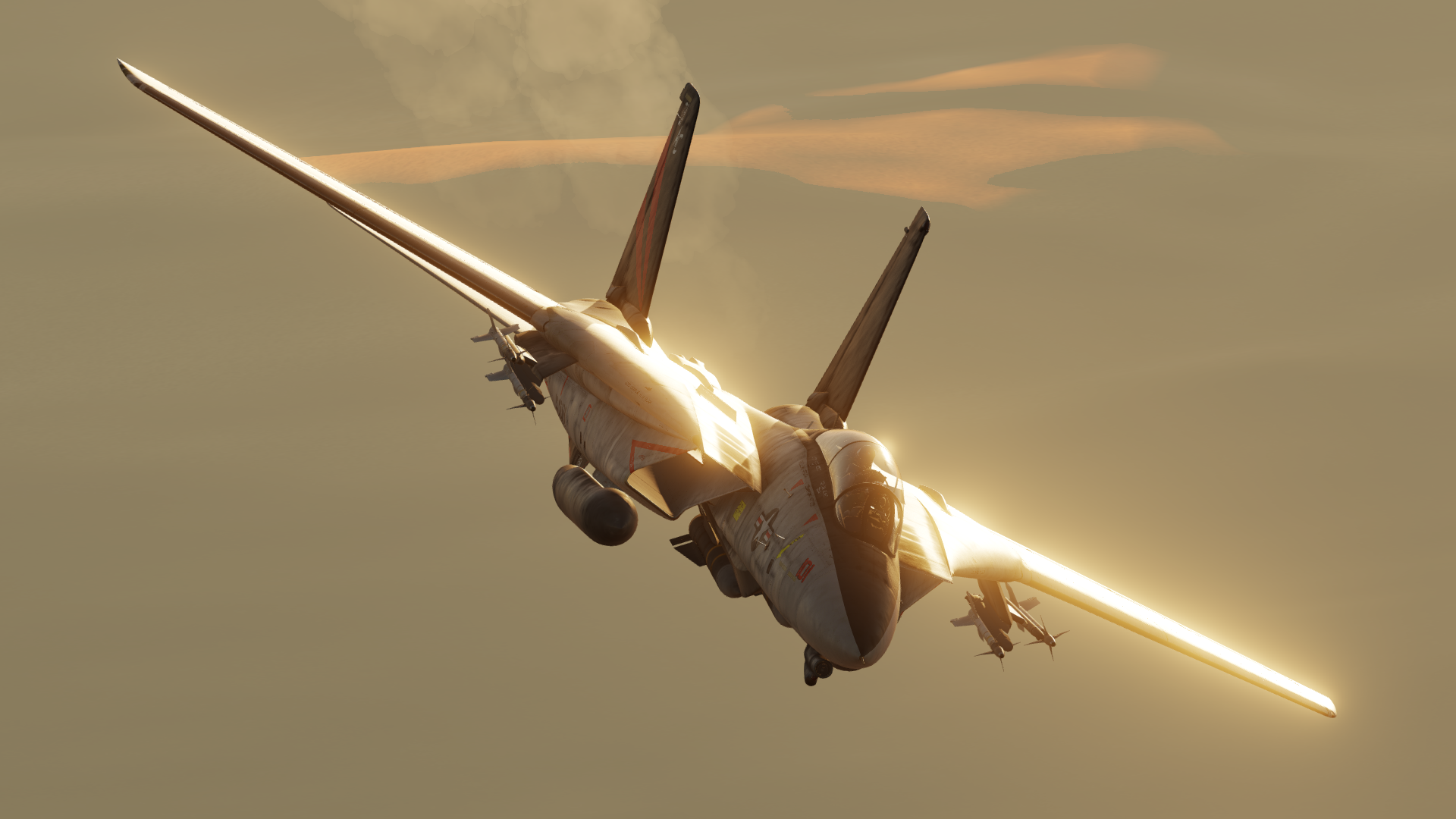-
Posts
351 -
Joined
-
Last visited
Content Type
Profiles
Forums
Events
Everything posted by BreaKKer
-
Tested it, doesn’t change it. I thought the exact same thing, but it only effects STT symbology. Closing Rate Symbol on the right side
-
My assumption on how the closure rate gates worked after an upgrade phase went something like: Nose- 2600 closing, 1200 opening Beam- 1800 closing, 1800 opening tail- 1200 closing, 2600 opening This goes under the same ±800.
-
Just looking at a bunch of video of the AIM-54 phoenix, from early development YAIM-54s all the way to AIM-54Cs being fired in Fighter Flings, I noticed a few differences between our phoenix's initial guidance to real life. For ideal comparison, look at timestamp 5:00 and watch the phoenix do it's magic compared to mine. 1. Our phoenix is ejected way too fast off the bottom of the jet. The phoenix is released from the bottom of the jet, not pushed off, so the phoenix ends up super far underneath the jet when ignition starts in DCS. 2. Ignition is slightly late. The phoenix from any real life footage activates just barely under the ventral fins and points the nose down with gravity, as compared to DCS where the missile tries to go nose high as soon as ignition starts. This may be actually correct and my point on #1 just dramatizes it. 3. Initial nose up of the phoenix is too early. From footage, the phoenix is much further out in front of the jet, 10-30 feet infront of the nose, as compared to my footage, where the phoenix lofts underneath the jet 4. The phoenix is teleported into the loft. You can see in the DCS footage, that the phoenix just magically starts climbing at timestamp 0:06, like it lost 5 degrees of AOA in an instant, compared to the real life footage, where the phoenix sits nose high for a few seconds before the AOA of the missile settles down and the loft starts to begin. Considerations: -The phoenix is told to activate later so it doesn't collide with the player/AI aircraft -The phoenix is all coded in the initial guidance phase to fly a certain path, regardless of what the model and telemetry date shows the missile doing -The guidance is still the old API, so it might just not be finished Other sources https://youtu.be/6cwYule1KyQ
-
Cranking on a supersonic missile? Seems a bit counterintuitive seeing the reliability for the radar to keep TWS tracks
-
Or you know, supersonic cruise missiles that the tomcat was made to fight
-
Was just reading over some AIM-54A testing and documents IRL and for the initial DCS development, and I noticed this Maximum Range Intercept Target - 52,000ft, M1.55. Launch - 45,000ft, M.145. Range 110nmi. Result: Intercepts irregularly, largely due to missile guidance logic. The closure rate in this is going to be 1800+ knots, which we can’t do anymore in DCS because of the target aspect implementation which limits nose aspect to -600 to 1800. Was curious if this was ever going to be refined after the discussion had in a previous forum post? sauce: http://media.heatblur.se/AIM-54.pdf
-

Tail Hook Physics only works on the 14A not the Bravo
BreaKKer replied to Skarp's topic in Bugs and Problems
My squadron just CQ'd yesterday, definitely saw hook skips -
Looks like you went outside the gimbal limits, and yes it can work inverted.
-
It’s been 2 years… why did this have to get rebumped for this
-
Same old DDD for the B upgrade. The APG-71 made the new DDD a thing. The B upgrades could only drop the GBU-31
-
There's a thing when you start a mission that the jet is automatically in autopilot. Just cycle the autopilot engage switch. You can't trim the jet in pitch while in autopilot
-
Yes. back phoenix rails were usually removed for the 2-2-2. Just for example, this is a 2-3-2
-
Mid 70s VF-1 with the 101 bird's AAR door off
-
TF-30s don't weigh the same as F110s
-
The D had 1000 pounds worth of extra avionics The “empty weight’ that you see in those documents are purely the fleet standard at the time. So the early F-14A docs say a much lighter weight because the Phoenix rails weren’t a part of the fleet standard of the time, because they didn’t run them a lot. The F-14B and F-14D weights are all Phoenix rail, possibly LANTIRN, and bag equipped jets, because they never took them off
-
DFCS. IRST that could track 4 targets at once. A radar that could see fighters all the way up to 200nm.
-
He’s saying you literally can’t see them because the harness holds you back from seeing over the entire front panel
-
Yep. Really weird how it works
-
For instance, flight briefing isn’t giving coords to anything, but bulls to a geographical landmark, a lake for example. WP1 is LAKE 307/64. With that, in theory, you could pull the NAVGRID up and type in RNG 64, and BRG 307, or just set NAVGRID HDG to 307 and full action a waypoint on that center line. From there, you should have WP1 at LAKE 307/64, but this isn’t the case. When trying to input RNG from bulls to that WP1, it references 64 miles to own ship, as if I was in A/C stab or ATTK stab
-
When receiving BULLs calls, throwing the bearing into the NAVGRID is no problem, but when using RNG on the CAP to put range from bulls in, it references the own A/C range to that waypoint. I was curious whether this is intentional, or if range to bulls is the correct number that should be getting referenced.
-
The cat’s limited to 8 datalink contacts and are prioritized by threat level. As in, hostile at 100 is worse than friendly at 40nm, so it will display that hostile and not the friendly
-
E-2 and E-3 converts all that and sends the tomcat the datalink it needs. AWACS receives Link16, and chooses what to send the tomcat in Link4
-
Would be nice to have bare LAU-138 pylons and those adapters. Though, we are dispensing chaff out of the LAU-7 at the moment... so low priority
-
Yep, that’s right
-

option to remove external fuel tank pylons from under intakes?
BreaKKer replied to Strikeeagle345's topic in DCS: F-14A & B
Should be an option for all variants seeing as how RAG F-14Ds didn’t have them on most



